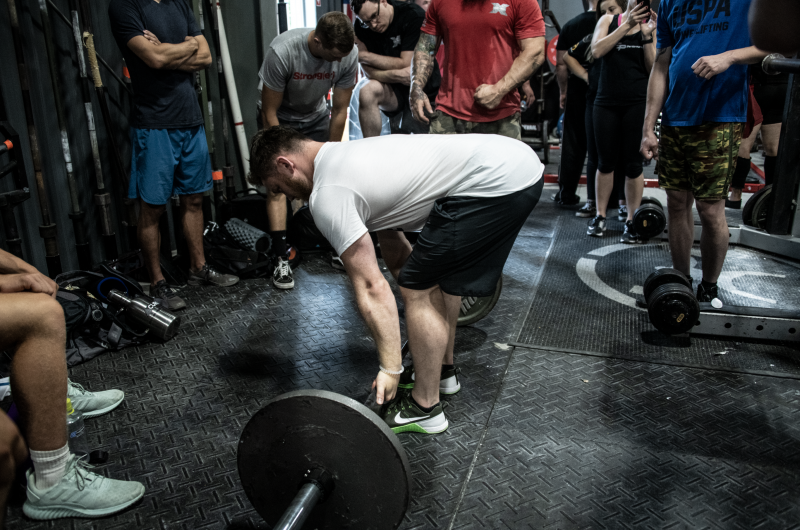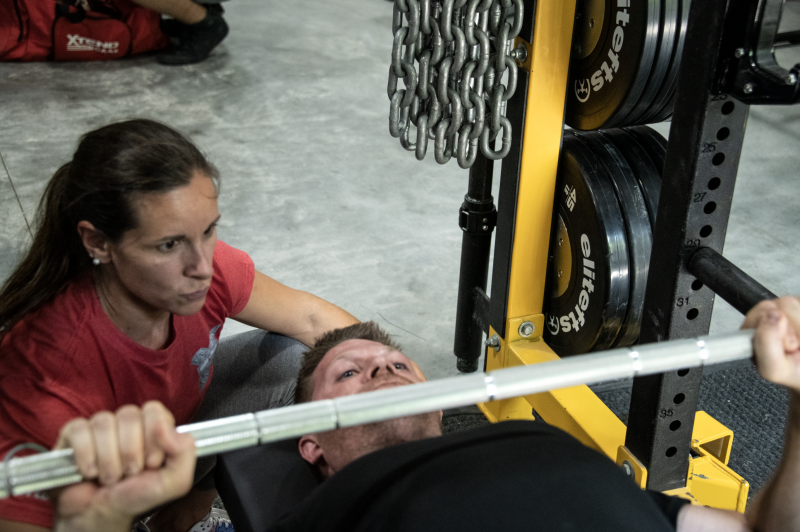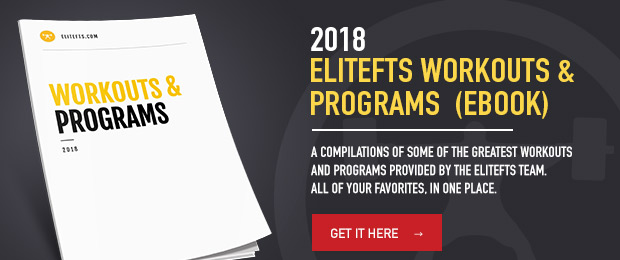
If we practice our axiomatic conditions, we can develop by almost any training program. By learning to effectively activate the body, we will always have progress in our training. As you read the article, you will see more details, which makes you understand!
In a scientific context, an axiom is a fundamental element, which in itself does not need to be proven but is used as a basis for explaining other theses. When we're training, we have different fundamentals. We can assume from the books in anatomy and physiology, they are mostly true. Then we have small anatomical differences that create different conditions. Ten different people cannot stand in the same squat position, but they need to adjust their stance to meet their angles. It is important how deep the femur socket is in the pelvis. It is important how long the femur we have in relation to the fibula and tibia bones. It is important how the muscle looks.
RECENT: Abdominal Pressure — What You're Missing in Every Lift
All of these are factors that, in themselves, do not need to be documented and proven for each individual, but that's something we need to take into consideration for how to put the training together for each individual. There are a number of methods to use to find the right one, but above all, it is the visual method used with how it feels for the athlete together with experience, of course.
The reason I use a word like axiom in this context is largely because I want to highlight the obvious, yet all too often missed, even by experienced coaches. Sometimes I have received emails from people who write that they want to buy a training program. My spontaneous reaction usually is, “Well, whose program do you want to buy?” A silence usually follows until the person answers that they want their own program. It would have been nice to buy Benedict Magnusson’s deadlift program and then work out like him with the same result. Of course, it does not work, but we have to look at what conditions you have. Without analyzing it too much right now, I can mention a few points that will matter:
- Physical conditions
- Biomechanical conditions
- Training background
- Level of ambition
- Work situation
- Family situation
- Type of equipment in the gym where you are training
As you can see, it's about creating an overall picture of the person. I often meet people who tell me that they downloaded some well-known lifter’s program online and that it feels great. The question is how long it works and how much they get out of it, against what they could have done if it had been completely adapted to themselves instead. Sometimes I receive specific questions about programming and the advantages and disadvantages of following a schedule based on weekdays compared to a rolling schedule.

Assuming you have a regular five-day job, you might deadlift every Monday and squat every Friday. In theory, you should be a little more exhausted on Friday compared to Monday, since you had two days of rest from the weekend. If you have worked nights over the weekend instead, you will be more tired on Monday. You may have a rolling schedule at work, where you partially work weekends and are available on weekdays. If you have a structured everyday life, consider structuring your programming in a similar way.
RELATED: How to Train While Working a Physical Job — Create Your Program
If you have a structured week and are rested on Monday and can train heavy deadlifts then, it does not mean that the increase will be bigger than your squat on Friday, even if you cannot lift max weights on Friday.
Imagine you go to the casino and play all your money at a blackjack table. Just because you lost your money at the blackjack table does not mean you need to stand there until you win. You may have lost your money there, but you can earn your money somewhere else.
What I mean is that even if you can only get 90 percent of your squat on Friday, that 90 percent still represents 100 percent of your physically possible strength performance. However, as much as it sounds like a cliché, the weight is just a number. When you compete, then you will be sure to be recovered and then suddenly have more to give because you can get more power, which generates more strength.
There is an expression that says that what you lose on the swings, you can get back on the carousels. An effort exerted in an exercise can increase the result in another. It's not just the squat that increases the strength of the squat. You can practice the deadlift and then belt squat and still get significantly stronger in your squat. The statement that you get good at what you practice is correct, technically. In terms of strength, you can be stronger, even in exercises you do not exercise, by maintaining the technique in the main exercise and then gaining strength in something else.
I recently saw a discussion about the importance of lats in bench press. On one hand, it was said that the muscle was not of major importance for a bench press, but there was no disadvantage to train the lats extra, but it would probably not give a bigger win in the bench press. It generates a lot of questions from my side. Who have you looked at?
Above all, it's interesting to look at:
- Physical conditions
- Biomechanical conditions
- The technique of the completed lift
- Training background
- Equipment
After evaluating it, it would be interesting to see where electrodes measured the activity. The lats are a big muscle and can perform contractions at different angles. It is not always a maximum contraction that you are looking for. A fundamental tone of the 10 to 20 hertz-muscle tone is a must for the muscle to stabilize around a joint. An increased tonus will contract the muscle. Say that the muscle would increase its tone to 50 hertz and then return to 20 hertz. Then it would mean that the muscle initiated the movement so that other muscles in the muscle chain were given a chance to kick in.
In a muscle chain, it works in such a way that a muscle causes a ground acceleration. When the acceleration in the muscle decreases, the next muscle goes on and continues the acceleration, and then continues until the movement is complete. Then they break the backward phase in the same way. None of these parts may be neglected, as everything is equally important. There is much talk about a chain never being stronger than the weakest link.
Many coaches have realized the importance of actually strengthening all links. But there is one aspect that is more important than how strong the links are, and that is that they actually also link to each other. Otherwise, the chain will not be able to pull any weight. In the eagerness to understand the separate links, it is very easy to forget about the chain itself and how it works.

If you have the lats, pectoralis, delts, and triceps doing the movement, you have to accelerate the lats, pecs, delts, and triceps in that specific direction and use the speed from every muscle to increase the acceleration from the next muscle. It's like you are driving a car starting on Gear One and suddenly, it changes to Gear Five without using the acceleration you can get from Gears Two, Three, and Four. Then Gear Four will slow the speed from Gear One. If you try to lock out your triceps before you let the pecs increase the speed in the movement first, triceps will slow down the movement instead of accelerating it.
All movements are dependent on an acceleration, otherwise, they will stop. Even this, I think, is an axiom. Unless this basic principle works, we will get nowhere. Because we have different angles, it can differ slightly at attachment points, and we have different lengths of muscles. There is a difference between fast and slow muscle fibers. It is important to find our own best conditions.
A common occurrence is that a person fails to activate the lats in the bottom of a bench press. Then the shoulders will instead compensate for the start movement to advance the upper arm to the position where the pectoralis muscle can take over and then let the triceps lock out the lift. If you intend to push a car in front of you or maybe something easier, you will automatically tense your back, putting tension around the lats to hold your arm into your most powerful position.
Another common error pattern is when someone who is training chest flyes in the cable cross is too upright in the body and pulls their arms towards the sides instead of pinching together in front of the body. This makes the lats become the most active part of bringing the arms towards the body, rather than the pectoralis muscles “squeezing together” in front of you.
WATCH: 8x8 Shoulders and Triceps
If you do not train after your axiomatic conditions, you risk getting into a compensation pattern that slowly but surely eats your results and often ends in an injury. I usually term it as a compensation ceiling. If the body compensates in the movement, there will be a limit to how much the body can compensate.
When you reach that limit, you often feel over-trained, gain muscle inflammation, or lose strength. Then you'll be forced to rest from the training and “start over from the start” to slowly get back where you were before it burst. It will happen again and again until you break the compensation pattern. Then it's like lifting the compensation ceiling and letting your own potential set the limit. Isn't that amazing? That's how it works, but it's up to you to work out right.
After reading the article, I hope to:
- Make your workout more nuanced.
- Help you find your own prerequisites.
- Increase your understanding that the programs need to be personalized.
- Find the right goal, instead of excuses.
- Open a new dimension, both physically and mentally.
Header image credit: Kheng Ho Toh © 123rf.com










